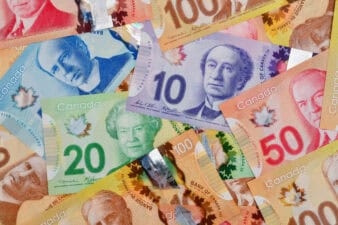Global stock markets crashed in 2020 when coronavirus struck. The S&P/TSX Composite Index did not escape the carnage. Besides its biggest single-day drop (12.34%) since 1940, every subgroup closed in the red on March 12, 2021. Canada’s benchmark slid further 11 days later to 11,228.50 points.
Fortunately, the TSX showed resiliency and stormed back to finish the COVID year with a 2.17% gain. Before the pandemic, market analysts predicted that 2020 would be a banner year. The index was close to topping 18,000 on February 20, 2020. Fast forward to July 6, 2021, and it hit a record high of 20,300.
The start of this year was explosive. As of this writing, the gain is 16.06% — or 9,004.06 points more than the COVID low more than a year ago. Also, the index hasn’t fallen below 20,000 since June 21, 2021. With the hot performance so far, will 2021 be the TSX’s best year ever?
Bold forecast
The TSX endured the 2008 financial crisis, despite losing 35.5% of its value on the year. However, redemption immediately followed when it posted an annual gain of 30.7%, exclusive of dividends, in 2019.
Predictions vary for 2021, although the website longforecast.com sees the TSX closing at 22,448. The minimum is 21,101, while the maximum is 23,795. Assuming the forecast comes true, the annual gain for the year would be 28.76%.
Bank heavyweights
If you were to invest today to achieve your long-term financial goals, stick to bank heavyweights Royal Bank of Canada (TSX:RY)(NYSE:RY) and Toronto-Dominion Bank (TSX:TD)(NYSE:TD). Canada’s top two banks are as formidable as ever.
After Q2 fiscal 2021 (quarter ended April 30, 2021), the combined excess common equity tier 1 (CET1) capital of RBC and TD is $24.5 billion. Each has enough equity in reserve following the significant reductions in provisions for credit losses (PCLs). The anticipated deterioration of loan portfolios did not happen.
RBC and TD are entertaining the thought of using the funds to increase dividends or do share buybacks. However, the Office of the Superintendent of Financial Institutions (OSFI) must lift the restrictions first before banks could perform such actions.
In Q2 fiscal 2021, RBC’s net income rose 166.7% to $4 billion versus Q2 fiscal 2020. TD reported a 143.89% year-over-year growth to $3.69 billion. RBC’s Dave McKay credits the impressive results to the bank’s powerful scale, strong market share growth and prudent risk management. He also cited the significant multi-year investments in talent and technology.
Bharat Masrani, TD Group’s president and CEO, said the strong quarterly results reflect the underlying strength of the bank’s diversified businesses, prudent approach to managing risk, and improving economic conditions.
The blue-chip companies have been paying dividends for more than a century, so it makes them excellent choices for long-term investors. Moreover, RBC trades at $127.98 (+24.76%) and TD at $84.70 (+21.48%). The number one bank pays a 3.43% dividend, while the second-largest lender offers 3.63%.
Stay invested
The forecast for the TSX is encouraging. However, the path to reach long-term financial goals is to stay invested in blue-chip assets over time. Many investors fail to achieve desired returns, because they often switch strategies. With Royal Bank of Canada and Toronto-Dominion Bank, you can buy the stocks now and hold them for good.







